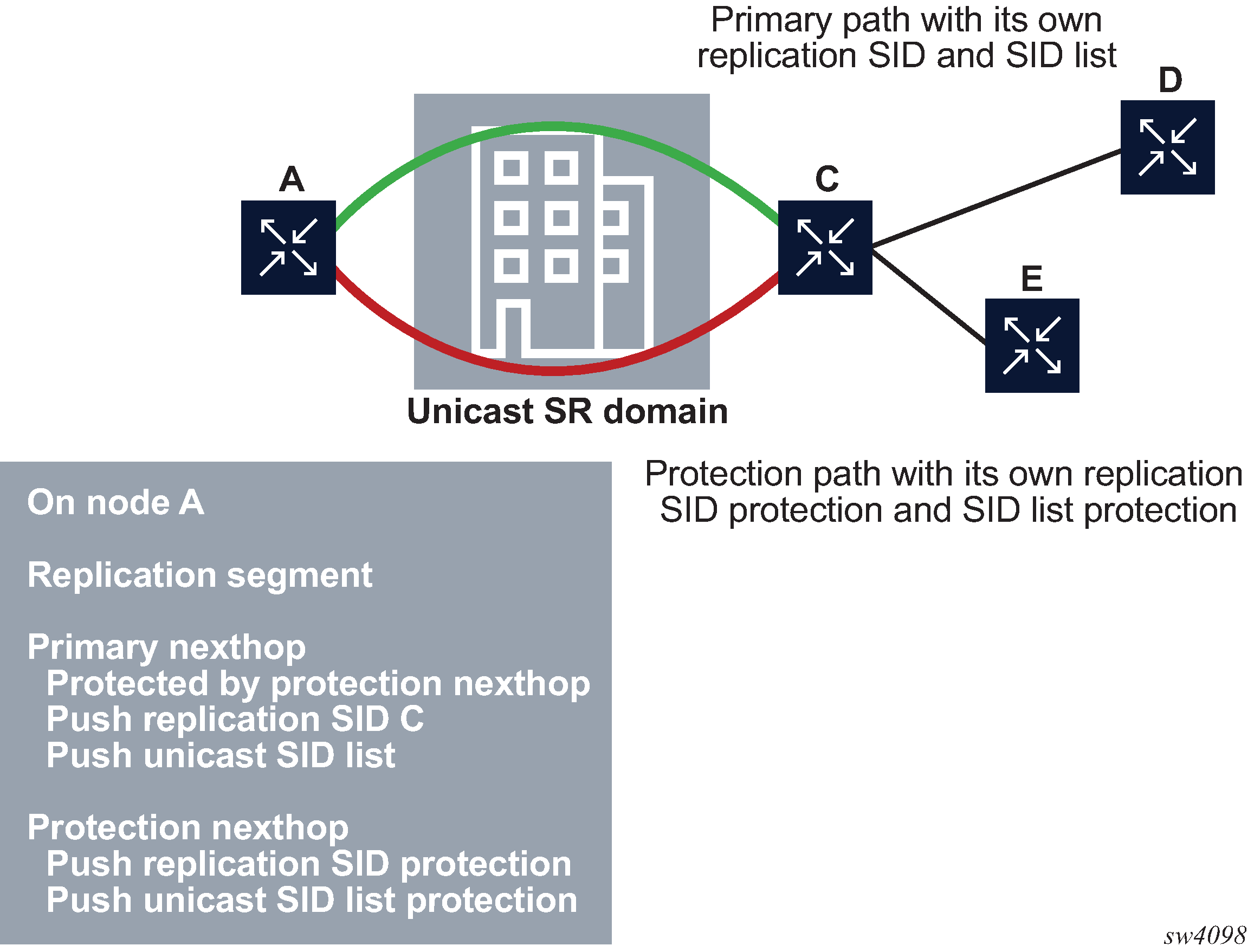When a unicast SR network is present between two replication SIDs, it is possible to connect the two replication SIDs through a unicast SID list, as shown in Figure: Replication segment steering through a unicast SR network. The SID list can be a list of adjacency or node SIDs that provides a traffic-engineered path though the unicast domain to connect the two replication SIDs.

The unicast SID list can be configured by listing the node or adjacency SIDs under a replication segment. Even if two replication segments are connected directly, the egress interface or the next hop can be programmed using a SID list. For example, an adjacency SID can be used as a mechanism to steer the packet out of a local interface.
The unicast fast reroute functionality and Equal Cost Multipath (ECMP) functionality are not available on the egress replication segment node on which the SID list is configured. However, the next downstream node in the unicast SR domain can take advantage of all unicast SR TE and resiliency features, for example, Loop-Free Alternate (LFA), Remote Loop-Free Alternate (RLFA), or Topology-Independent Loop-Free Alternate (TI-LFA).
On the egress replication segment node, the protection next hop can be configured using a replication SID. In addition, a SID list can be used in any nexthop object under the replication segment, including the protection next hop object, as shown in Figure: Primary and protection paths with SID list.
